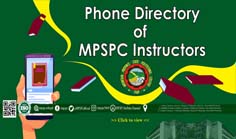THE SOCIO-ECONOMIC AND CULTURAL PRACTICES AND BELIEFS IN THE
CONSERVATION OF THE RICE TERRACES IN MOUNTAIN PROVINCE
Mary T. Dumanghi
ABSTRACT
The study aimed to determine the role of the cultural practices and beliefs of the people of Mountain Province in the conservation of the rice terraces in Mountain Province from land preparation to post harvest. It also determined the contributions of the socio-economic and cultural practices and beliefs to development in Mountain Province.
The study was conducted in places where there are rice terraces in Mountain Province. The identified places were clustered on the following grounds: climate, elevation and topography. These clustered areas are Sumadel, Lubon, Masla, to represent Sabangan, Tadian and Bauko. To represent Bontoc are Mainit, Talubin, and Bayyo; and Sagada represented by Suyo, Ankileng and Tetep-an.
Respondents of the study were the schooled and the unschooled who were chosen according to the following criteria: knowledgeable and conversant with regard to the cultural practices, beliefs related to the preservation of the rice terraces; native born; preferably a native priest or priestess.
Tools used in the data gathering were: secondary data gathering, interview, participant observation, picture taking and focused group discussion.
Results show that there are socio-economic and cultural practices and beliefs, relevant to the conservation of rice terraces. In field preparation, the people have to clean the rice paddies or do the slash and burn, lidas or tengteng, decomposing of tonotong plants, repair of stone wall or rip rapping, and the legleg. Seed selection is the next step to be done before sowing where they do the Kentan di Padog. After sowing, field preparation is again to be done in preparation for the asi-toned. Other economic activities to be done are: kentan di toned, padya, asi-sama, asi-danum, asi-bewew, the begnas, and the asi-ani or harvest time.
Other systems of preserving the rice terraces are: the tayan system of Bontoc, the bituwan system of Barlig, and the lakun system of Sabangan. The contributions of the cultural practices are: sustainability of the fertility of the soil, solidarity among the community folks, values enhancement, adherence by each constituent of the value of Inayan, and conservation and preservation of the rice terraces.
In conclusion, there are socio-economic and cultural practices that are contributory to the preservation and conservation of the rice terraces in Mountain Province. Healthy soil is vital to the functioning of the ecosystem and the capture of energy for human beings. The limited distribution of fertile soil at earth’s surface restricts the distribution and activity of human beings in the rice terraces.
From the foregoing findings and conclusion, the integration of the cultural practices and the values derived from the practices in the three levels of the education ladder; and for MPSPC to help disseminate the results through its extension program and to produce flyers to this effect are recommended.

















